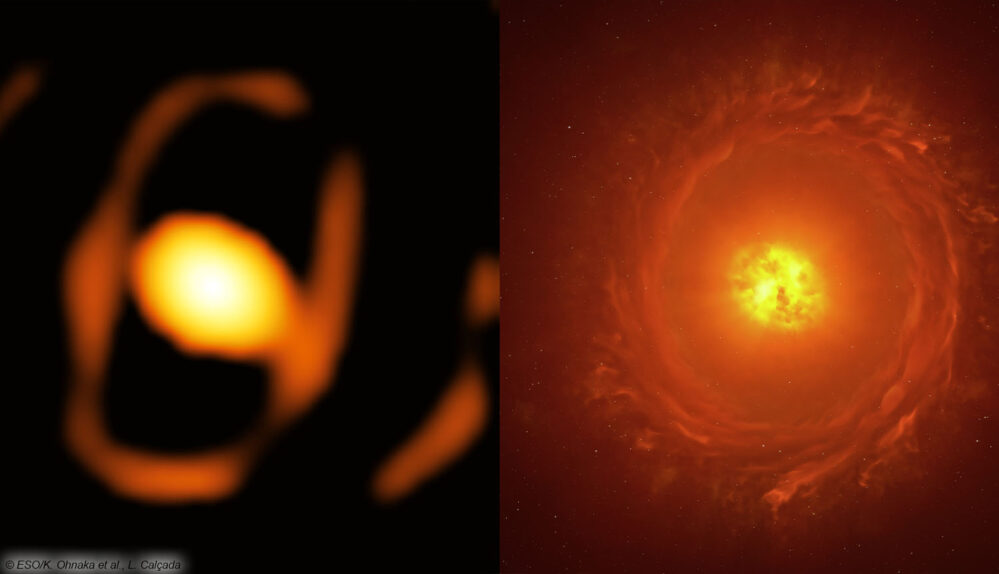A star dies in a satellite galaxy of our Milky Way. Astronomers are now taking a close look at such an event that is so far away for the first time.
For the first time, astronomers have taken a close-up view of a star outside our galaxy. The dying star WOH G64 is 160,000 light-years away from us, the European Southern Observatory (ESO) reported. A light year is the distance that light travels in one year. It takes just over eight minutes from the Earth to the Sun. WOH G64 is a red giant, a bloated dying star about 2,000 times larger than the Sun that is constantly spewing gas and dust into space.
Using the latest technology – connecting several telescopes to form a so-called interferometer – astronomers have already succeeded in making the shape and details of around two dozen stars in the Milky Way visible. This has not yet been possible for stars outside our galaxy.

The star WOH G64 shown now is located in the Large Magellanic Cloud, a small satellite galaxy of the Milky Way. The images taken with the European Southern Observatory’s Very Large Telescope Interferometer in Chile show that the star is surrounded by an egg-shaped cocoon of gas. “This could be related to the violent ejection of material from the dying star before a supernova explosion,” explains Keiichi Ohnaka from Andrés Bello University in Chile, one of the researchers involved.
Astronomers expect WOH G64 to explode in a few thousand years – in astronomical terms, just an instant. It therefore offers researchers a unique insight into the final phase of a star’s life. They present the star in the journal “Astronomy and Astrophysics”.
Also interesting:
Image source:
- WOH G64: ESO/K. Ohnaka et al./Y. Beletsky (LCO)
Source: www.digitalfernsehen.de


